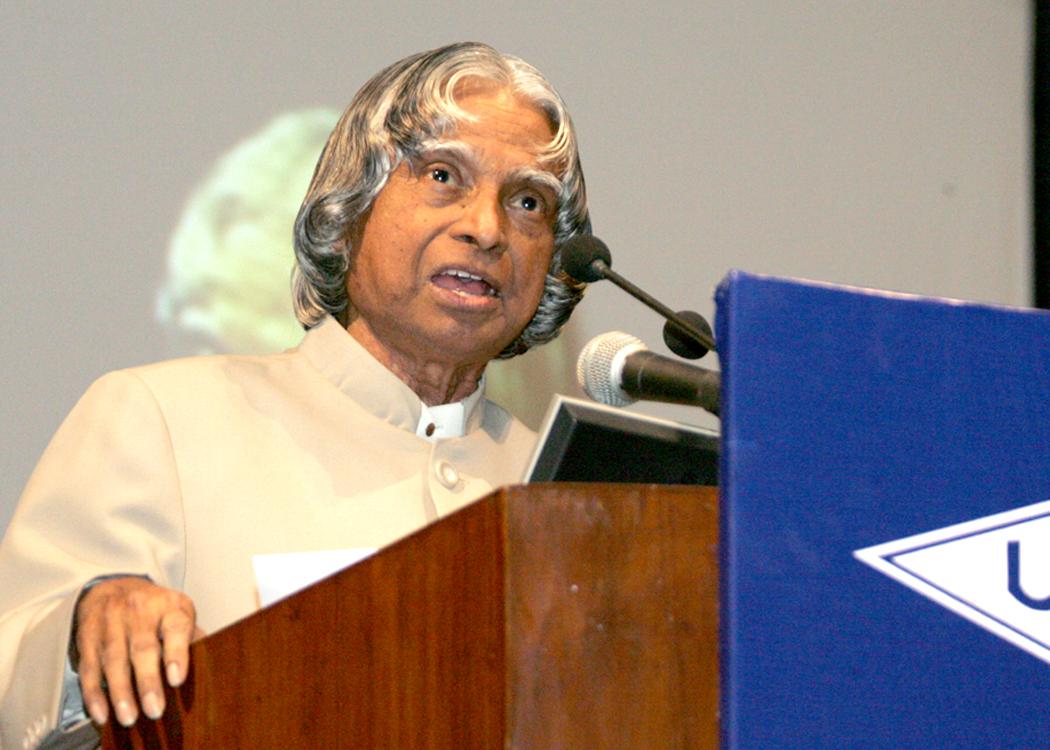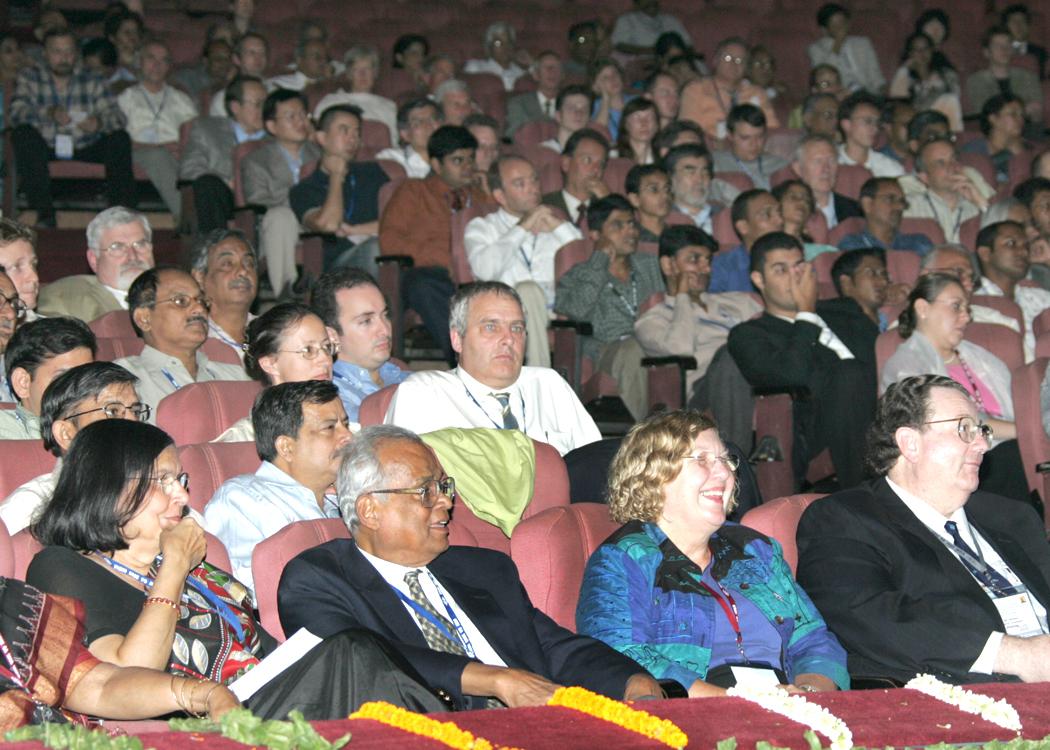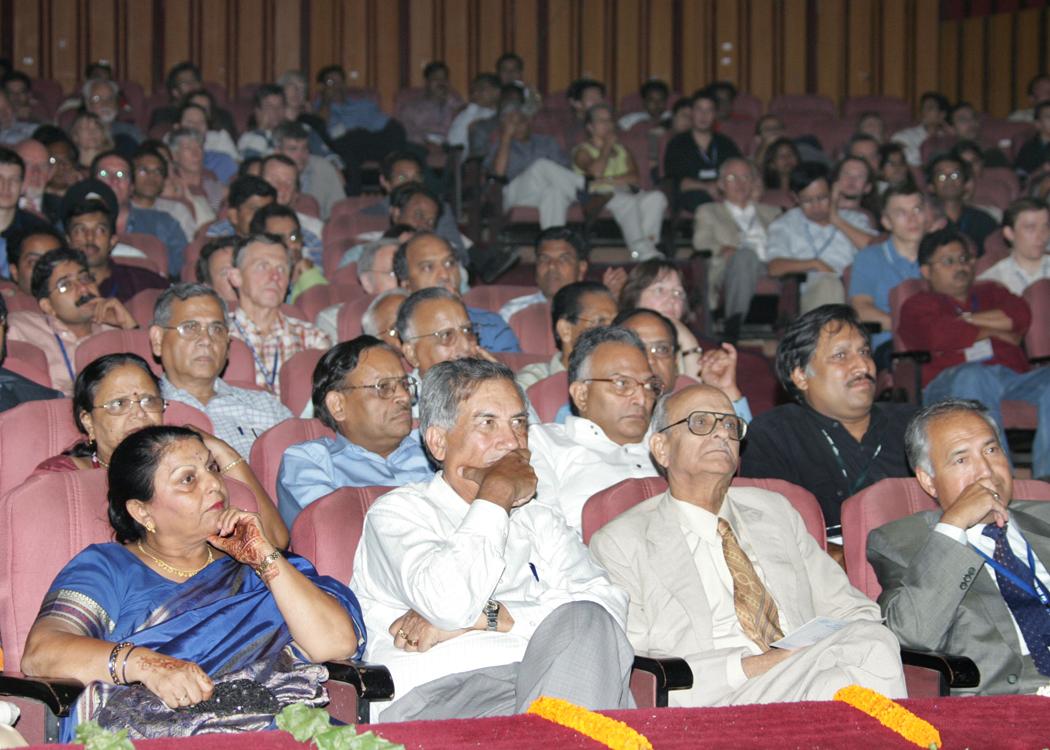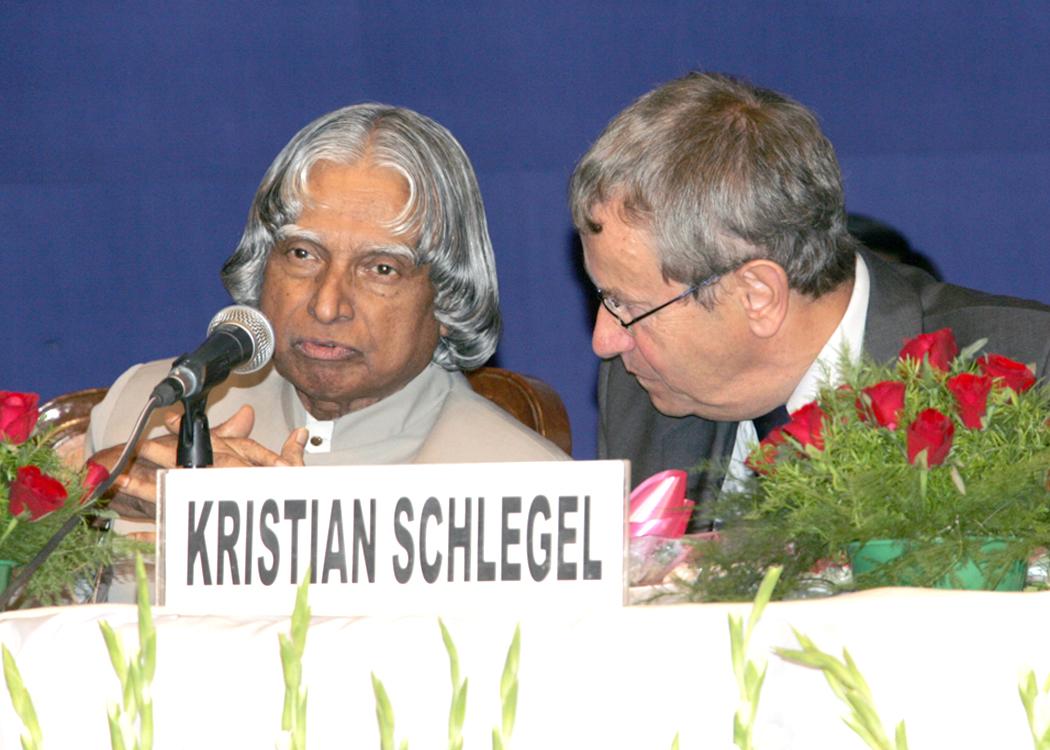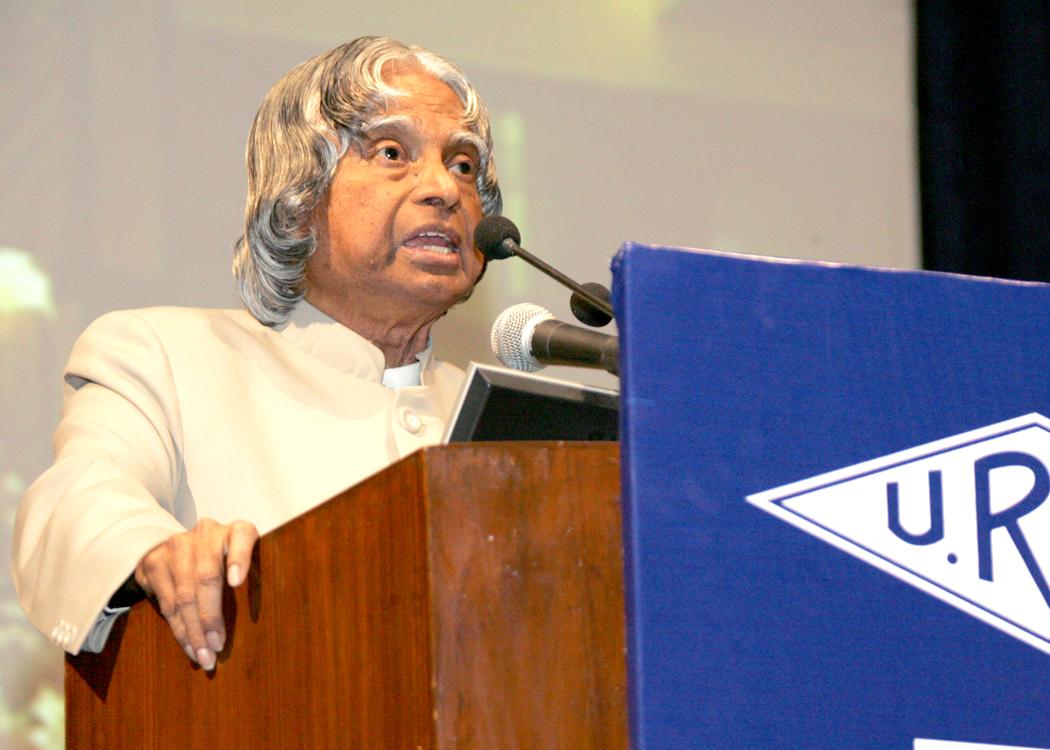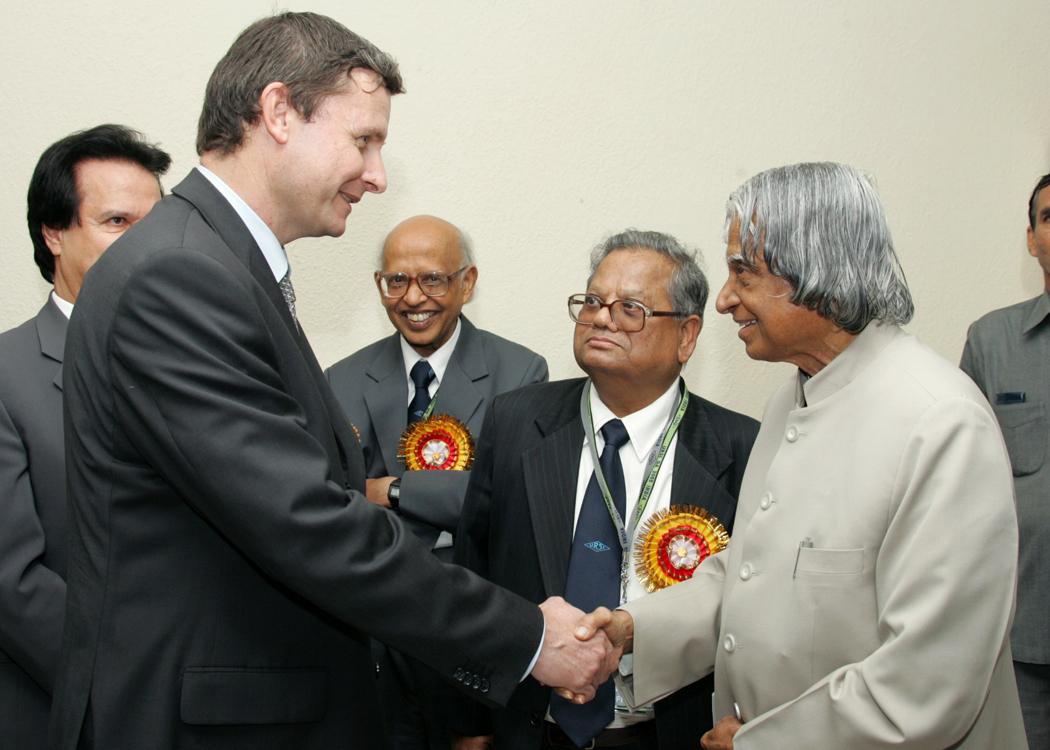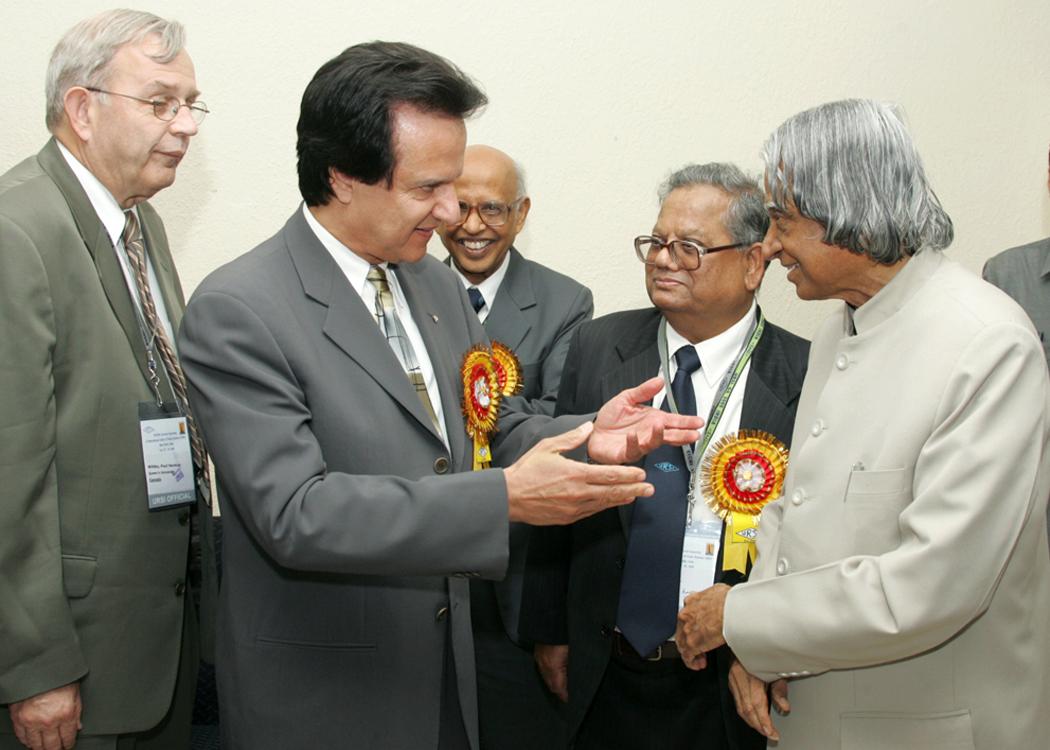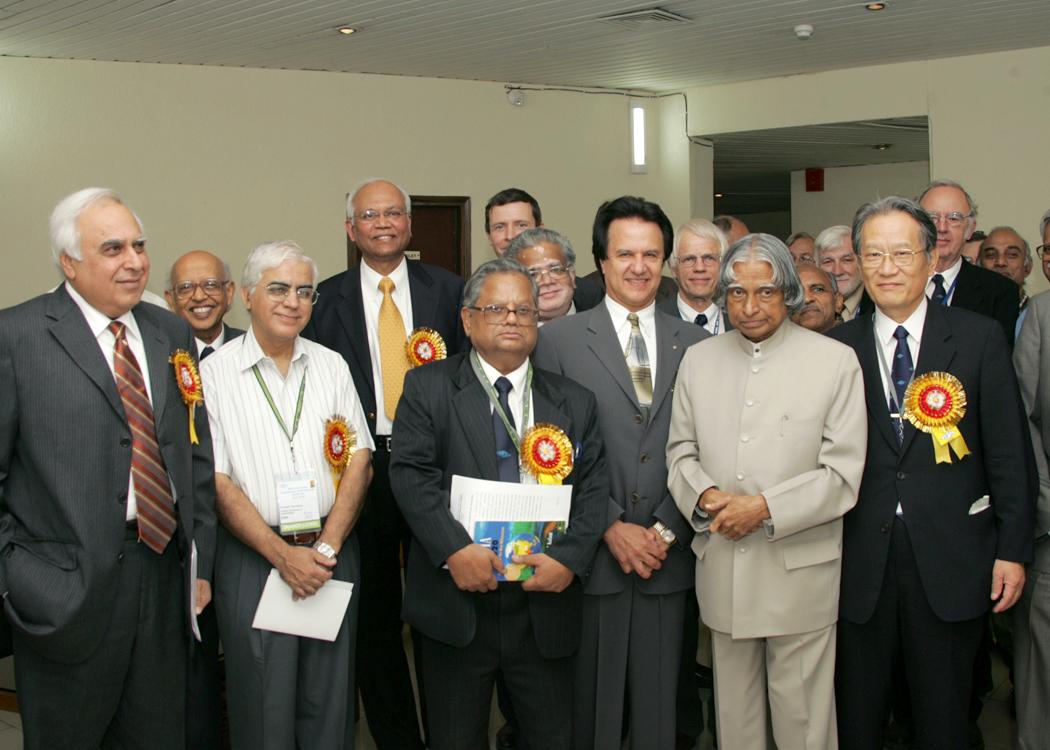Address At The Inauguration Of General Assembly Of International Union Of Radio Sciences (Ursi)
New Delhi : 22-10-2005
Electro Magnet Spectrum: A Friend of the Humanity
I am delighted to participate in the inauguration of the General Assembly of the International Union of Radio Science (URSI). My greetings to the organizers, scientists, educationists, technologists and distinguished participants especially delegates coming from various parts of the planet. I particularly greet Dr. A.P. Mitra for his pioneering contribution to radio science. The domain of URSI extends throughout the solar system and out among the galaxies. I am sure that when man reaches the outermost limit of the observable universe he will be assisted by means of radio for communicating with earth from the space platform for navigation and control using electro-magnetic waves envisaged by Maxwell, J.C. Bose and Marconi about a century ago. In the eight decades of the existence of URSI, this is the first time the General Assembly is being held in New Delhi and offers an excellent opportunity to the radio scientists particularly young scientists to interact with international experts on state-of-the-art subjects. I have selected the topic "Electro Magnet Spectrum: A Friend of the Humanity".
Study of upper atmospheric electro jet
When I see you friends, scientists and technologists of different disciplines connected with the electro magnetic spectrum, belonging to India and different countries assembled here, I am reminded of an event which took place on November 21, 1963, when I was a rocket engineer at Thumba. This was a very important day in the history of India's space programme. On that day, the first sounding rocket from India was launched from Thumba with international co-operation. The rocket and payload was integrated in the Thumba Equatorial Rocket Launching Station (TERLS). The rocket carried the sodium vapour payload to study the upper atmospheric winds and Longmuir wave probe to study the upper atmospheric electro jet. This first experiment, paved the way for many sounding rocket experiments and TERLS was dedicated, to the international scientific community, for the unique experiments in the electro magnetic jet, as India was uniquely placed near electro magnetic equator to study electro jet and related phenomena in the ionosphere. The 1963 rocket launch from Thumba was my first experience with radio propagation and related studies. The starting of Thumba Equatorial Rocket Launching Station (TERLS) was the seeding of India's space programme. Since Prof Vikram Sarabhai was the founder for the Physical Research Laboratory at Ahmedabad which was spearheading the space research, TERLS became the laboratory for space experiments.
Here I would like to mention the contribution of Prof Vikram Sarabhai who worked on experimental cosmic ray, Dr. Homi Jegangir Bhabha who carried out research relating to cosmic radiation and Dr. Kothari who is well known for his work on ionization on matter by pressure in cold compact objects like planets. Apart from their contribution in their areas of specialization, Prof Vikram Sarabhai sowed the seeds for ISRO, Dr. Homi Jegangir Bhabha, architect of nuclear science, created the Department of Atomic Energy and Dr. Kothari was the architect of defence science in India. We are proud of the contribution made by these three physicists in building three great scientific and technological institutions to nurture and grow science and technology in our country. Today the space programme through its sounding rocket programme and geosynchronous satellite programme is contributing for India's communication covering the major electromagnetic spectrum.
Radio Communication: Life Line of Projects
In the early days of space programme, for overseas communications, we used to have wireless communication link between Trivandrum and Mumbai for onward connectivity to the rest of the country and outside world. Similarly, in the early phase of missile programme, the communication link between Hyderabad and Chandipur, Balasore was also through wireless sets. In fact, the entire operational communication systems between Wheeler Island, Main Land, Balasore, SHAR, Down Range Ships and Car Nicobar were through HF wireless communication links. These communication facilities made me understand the value of robust noise free radio communications and the role of scientists and engineers in realizing these systems for real application.
Child's Fantasy
Recently, I participated in the award ceremony of Shankar's International Children's Competition at New Delhi. There I found the visualization of a 13 year old girl named Aardhra Krishna on how the earth's civilization will look like around 3000 AD. In her imagination, the citizens are forced to migrate to Mars and have made Mars the home to a flourishing civilization. This advanced civilization, which was man made, comes suddenly under threat created by nature in the form of an asteroid of Jupiter. The asteroid from Jupiter orbit was coming towards Mars and Mars was in danger of extinction. The scientists on Mars come up with a very innovative plan of a barrage of nuclear cannons to attack the oncoming asteroid. The bombardment destroys the asteroid and the year 3000 sees a Martian civilization surviving from the fury of the nature by an innovative scientific application. What a wonderful scientific and technological thinking of the young mind? Will it all be possible without the availability of Radio science which transmits large amount of information encompassing the entire solar system? When I was admiring this imagination of the young student, a real time space experiment took place that gave some meaning to the imagination of the youth.
Combating Asteroids
On 4th July 2005 one important event took place in space. That was the impact of the NASA spacecraft called deep impact smashing into the comet Tempel-I, with enough force to create football stadium sized crater with a depth of a 14 storey building. The spacecraft was navigated through a ground control system by an Indian, Shyam Bhaskaran - the deep impact travelled 431 million kms in 172 days escaping from the earth orbit and intercepted the comet at a straight distance from earth at 134 million km. The comet was orbiting around the Sun every five and half years. This is a land mark in radio communications and space exploration.
This event is an important milestone to develop standardized technique for combating asteroids which may hit the earth in future. One such large asteroid (1950 AD) is predicted with certain probability to hit the earth on March 16, 2880 AD and nearly one third of the earth would be damaged. Like the "Deep Impact" many spacecraft will be required to be sent with high energy material particles to divert or break the asteroid to move it out of the dangerous orbit. All this is possible only if we have a reliable robust radio communication system.
Binary millisecond pulsar
One of the important areas of application of radio science in India is the discovery of binary millisecond pulsar. A pulsar is the remnant of a star which exploded, leaving behind a sphere made up of neutrons just 20 km in size but weighing more than the sun. The pulsar emits a beam of radio wave which is seen from the earth as a pulse every time it rotates. These waves are very weak, when they reach the earth. In order to detect the pulsar, one needs facilities like the Giant Meter Wave Radio Telescope (GMRT). The Tata Institute of Fundamental Research (TIFR) has built this largest Radio telescope in the world in rural area near the village of Khodad, 80 km from Pune. Because of the unique capabilities of our GMRT, scientists from all over the world, including USA and Canada, visit the centre to conduct collaborative experiments. Our scientists played a leading role in the recent discovery of a new "Binary millisecond pulsar". Discoveries like the one that has been made by the scientists of the National Centre for Radio Astrophysics of TIFR, is an important contribution for our radio science. Particularly I greet the team lead by Prof Govind Swarup.
Earthquake Forecast and Electromagnetic phenomena
In many places in our planet, we experience severe earthquakes resulting in loss of life, loss of wealth and in some cases it destroys the decades of progress made by the country and its valuable civilizational heritage. India has earthquake problems periodically in certain regions. Recently, in our state of Jammu and Kashmir and the neighbouring country, there was an earth quake. US, Japan, Turkey, Iran and many other countries also suffer due to earthquakes.
Earthquake is a sub terrain phenomenon and predicting this from space observations would be a great challenge. An Earthquake phenomenon in broader sense starts to produce some precursors before the final rupture, although this precursor generating pre-rupture stage is not usually regarded as part of an earthquake. The question is whether such precursor really exists or not. So-called pre-slip envisaged in the dynamic models of earthquake source is also a good theoretical possibility but its observation appears difficult. Precise geodetic measurement by GPS may succeed in the detection of the pre-slip. It seems that electromagnetic phenomena prior to final rupture may be promising. According to new concepts earthquakes occur when the crust reaches a critical state, emission of electromagnetic signals before final rupture is theoretically plausible, notably in the ultra low frequency (ULF) range and very low frequency (VLF) range.
It is hoped that well organized electromagnetic monitoring may provide unique observational information on the pre-slips. Atmospheric/ionospheric anomalies still remains unresolved. Post earthquake disaster recovery, communication and damage assessment are also areas where space science and communication technology can quickly make its impact. I am sure radio scientists will definitely be keen to establish the co-relation between the occurrence of earthquake and the electromagnetic disturbances noticed in the specific region.
Disaster Warning System
It is important to mention and acknowledge the contributions made by the Amateur radio operators called HAMs, who started using radio communication technique particularly the shortwave for long distance communication through the ionosphere during the first decade of 20th century. The experience of HAMs has been used for remote area, disaster management and emergency communication world over during the last hundred years. NASA, ISRO and other space agencies have honoured the HAMs by launching exclusive satellite for them so that they can continue to contribute in the latest trends of satellite communication. During the recent Tsunami it was a coincidence that a Government of India approved amateur radio expedition was in Andaman and was operational during the disaster and provided vital communications to the main land and Indonesia for getting latest updates on the movement of Tsunami waves and rescue operations. The contributions made by Indian HAMs in this Tsunami have been acknowledged at national and international level. Amateur radio and remote area communication are synonymous with emergency communication. It is advisable to promote this hobby to set up amateur radio stations in Panchayats offices, schools and hospitals by voluntary agencies who will be able to locate and operate the HAMs throughout the day and night, on all days. Each Panchayat must encourage this hobby and can make it as a part of the village knowledge centre. This will act as an early warning system for the village community in case of an unforeseen eventuality. At this hour, I would like to remember fondly the significant contribution of the Late Dr. Shrikant Jichkar in promoting HAMs in India.
Commercial radio communication system operates with high power, frequency diversity with large antenna to improve the reliability of communication. HAMs work with limited power under man made and natural radio interference and work in difficult circumstances. There is a lot of scope to improve narrowband communication technique multi hop HF communication to remote areas such as Antarctica and Arctic to improve the quality of HAM communication. The members of the radio science community can definitely assist the HAM operators through research in establishing low cost narrow band communication techniques.
Space Industrial revolution
India is in the mission of transforming into a developed country. Many developed countries are racing towards Moon and Mars which may lead to the next industrial revolution. We also have the opportunity of joining this exclusive club of nations to establish industry in Moon and Mars with our core competence in space science and technology. The technological challenges are:
* Manufacturing and Mining in reduced gravity.
* Harnessing Helium-3 in Moon for future energy, using oncoming fusion technologies.
* Using dry ice deposits in Moon and Mars as source of fuel rocket engine.
* Extending life of satellites in orbit through refueling and repairing.
* Using the Moon as space transportation hub.
* Building human habitats on the Moon, Mars and also in outer space.
* Above all, it is essential to establish reliable space communication systems that will work during all ionospheric disturbance and sunspot activities.
Lunar Telecommunications Base
Characteristics of moon have a vital implication for space science. As civilization spreads to Mars in five to eight decades, the Moon will provide the main link between earth and her scattered children. The earth's ionosphere reflects all but the shortest radio waves back to Earth. Earth's dynamic atmosphere prevents the use of lasers for communication into space. On the near airless Moon, this would not be a problem, for the Moon's sky is perennially clear to waves of all frequencies. Thus the Moon will soon become a "Telecommunications Hub" for interplanetary communications, aiming its tightly focused laser beams to other planets and ships in space. With interplanetary communication systems located on the far side, the Moon would also shield these communication stations from the continuous radio emissions from the earth. The far side of the Moon would be the quietest place within millions of kilometers from the earth, in the sense of radio silence. The coming few decades will provide a great challenge to the radio scientists.
Conclusion: Suggestions for the Conference
Since large number of radio science specialists have assembled here I would like to make the following seven suggestions to this scientific community which will be useful to the entire mankind.
(1) There has been a revolution in communication science and technology all over the world. The result of this revolution has to reach the common man. This can be in the form of providing affordable high bandwidth tele-communication to every villager, such as mobile phones with GPRS/CDMA, satellite & FM radio and IP communication. Research is required to bring down the cost and make this revolution reach seamlessly to six billion people of the world.
(2) The power of radio communication needs to be utilized for improving the educational standards of our rural masses. Recently, I was addressing the students of three universities in three different regions of the country from Rashtrapati Bhavan. While organizing this event I found that the connectivity to various corners in the country is yet to become seamless. The radio and space communication specialists have to work together to make high bandwidth seamless connectivity for the tele-education programmes to reach our distant villages with ease through broadband communication.
(3) There are possibilities of co-relation between the seismic activities, electro-magnetic activity in the particular region. There is a need to have a comprehensive study on the subject. This study should also be linked with the study of other geophysical parameters relevant to an earthquake. This will be a great contribution of the radio science community to the mankind towards disaster mitigation.
(4) India is in the process of establishing three Science centres in different parts of the country to create a scientific research cadre. The URSI can evolve a possible curriculum for study and research in the electro magnetic spectrum in these advanced centres.
(5) I understand that the adaptive radio and software radio are among the thrust areas of wireless communication technologies. In this connection, it is essential for the radio scientists to provide a solution for getting high bandwidth communication in the wireless spectrum in a mobile environment for an optimal distance without the constraints of line of sight.
(6) Radio scientists and technologists should continue to strive for optimum and bandwidth efficient communication techniques even when higher frequency bands like millimeter waves, sub-millimeter waves and quasi optical waves have started becoming available; there is not much congestion at this stage in this frequency band, but the ever increasing use of radio frequencies spectrum needs evolution of an allocation criteria.
(7) Solar power satellites may become a reality in few decades. Because of its potential for transmitting large volume of power in Gigawatts, the possible electric power transmission is through microwave to the earth. Research is essential to find out the relationship of transmitting frequency with atmospheric structure.
I find that radio science embraces all areas of human activity such as provision of cost effective communication to all the citizens, education, healthcare, development, disaster mitigation, earthquake forecasting and solution to energy problem. In overall perspective, connectivity is the key for the growth of the humanity. Hence, radio scientists have a major role to play with their continuing research in promoting economic prosperity to the planet Earth through uninterrupted connectivity. My best wishes to all the participants of the General Assembly of International Union of Radio Science in their mission of making electro magnetic spectrum a friend of the humanity.
May God bless you.

